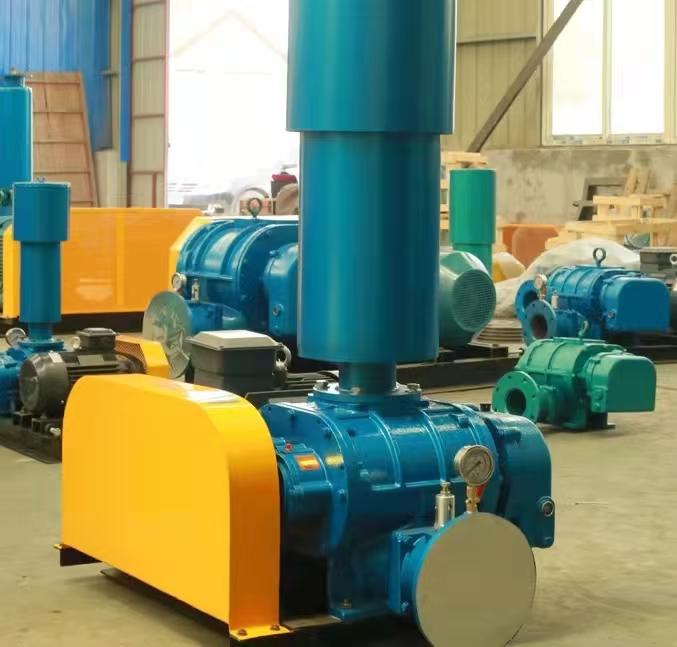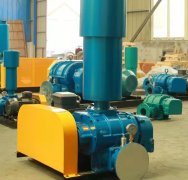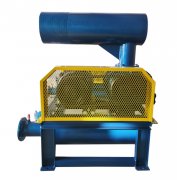The matching frequency converter of Roots blower needs to be selected accurately according to the load characteristics, power and usage environment. It is recommended to use heavy-duty (G-type) frequency converter and cooperate with vector control technology to achieve energy saving and stable operation. The following is a specific analysis:
1、 Selection criteria for Roots blower frequency converter
Load characteristic matching
Roots blower belongs to constant torque load, and its torque is independent of speed. Therefore, a frequency converter with constant torque output capability should be selected. The heavy-duty (G-type) frequency converter has an overload capacity that can meet the instantaneous load requirements during the start-up and operation of the fan. If using a light load (P-type) frequency converter, the power needs to be increased by one level to ensure stable operation.
Power and current matching
The rated power of the frequency converter should be consistent with the motor power, but it should be selected based on the actual current value of the motor. For example, if the rated current of the 45kW Roots blower motor is 84.5A, a frequency converter with a rated current ≥ 84.5A needs to be selected. At the same time, the frequency converter needs to support instantaneous overload (such as 1.1 times the rated current for 1 minute) to cope with the surge current when the fan starts.
Environmental adaptability
In high temperature, high altitude, or high switching frequency environments, the frequency converter needs to be used with reduced capacity. It is recommended to increase the power by one level. For example, in areas above 3000 meters above sea level, the output power of the frequency converter may decrease by 10-15, and the performance loss needs to be compensated for by amplifying the capacity or installing output reactors.
2、 Key technical requirements for frequency converters
Vector control technology
The decoupling control of fan speed and torque can be achieved by using sensorless vector control (SVC) or flux vector control (FVC). This technology can enhance the torque output capability during low-frequency operation, avoiding the fan from shutting down due to insufficient torque at low speeds.
Harmonic suppression and power factor
The frequency converter needs to have built-in harmonic suppression function to ensure that the total harmonic distortion rate (Ti) of the input current is ≤ 5, avoiding pollution to the power grid. At the same time, the output power factor should be ≥ 0.95 to reduce reactive power loss. For example, the new Fengguang JD-BP38 series high-voltage inverter adopts power unit series multilevel technology, and the harmonic index is much lower than the IEEE519-1992 standard.
Quick response and protection function
The frequency converter needs to have millisecond level speed response capability to adapt to rapid changes in process parameters. At the same time, it is necessary to integrate protection functions such as overcurrent, overvoltage, undervoltage, overload, and short circuit to ensure that the fan stops under abnormal working conditions. For example, the new wind and solar inverter provides a "fast speed start" function, which can reset from the protection state and resume operation with load within 0.1 seconds.
3、 Analysis of energy-saving effect of frequency converter
Power speed cubic relationship
According to the formula of fluid mechanics, the power of the fan shaft is proportional to the third power of the rotational speed (P ∝ n3). When the speed drops to 80% of the rated speed, the shaft power is only 51.2% of the original, and the energy-saving effect is significant. For example, after a printing and dyeing factory in Hebei changed the 75kW Roots blower to variable frequency control, the actual power consumption decreased from 66.7 kW to 43 kW, saving about 150000 yuan in annual electricity bills.
Soft Start and Grid Protection
The frequency converter can achieve soft start of the motor, limiting the starting current to within 1.5 times the rated current to avoid impact on the power grid. At the same time, it can reduce mechanical impact and extend the life of machine bearings and gearboxes.
Process matching and air volume adjustment
Through the built-in PID controller, the frequency converter can automatically adjust the fan speed according to the system pressure or flow requirements, achieving constant pressure or constant flow control. For example, in the aeration system of sewage treatment, the frequency converter can adjust the air volume in real time according to the dissolved oxygen concentration, improve treatment efficiency and reduce energy consumption.
4、 Typical application cases
Sichuan Mining Co., Ltd. Roots blower renovation
The company used the new Fengguang JD-BP38-450F high-voltage frequency converter to retrofit a 450kW Roots blower. After the retrofit, the operating noise of the blower was reduced, and the windproof valve of the air supply duct was closed. The blower speed was adjusted to meet production needs. After testing, the energy-saving rate reached 60% after the renovation, and the electricity consumption per ton of clinker decreased from 15 kWh to 6 kWh.
Variable frequency transformation of Roots blower in cement industry
After installing a frequency converter on a 132kW Roots blower in a 2KT/D cement plant, the energy-saving rate reached 60%; After installing a frequency converter on a 55kW Roots blower in a 1KT/D cement plant, the daily energy savings reached 420 kWh. After the renovation, the fan adjusts its speed to match the working conditions inside the kiln, reducing the amount of air released from the vent valve and minimizing energy waste.



